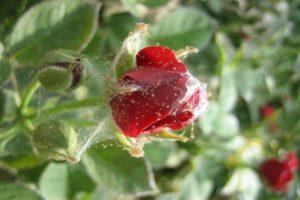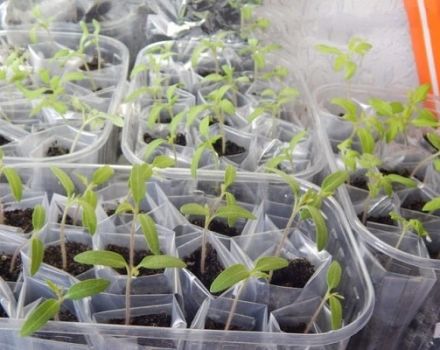Description and characteristics of the Corvette rose variety, cultivation and reproduction
The rose has long been considered the "queen" of the garden; stories and legends have been written about her. The classic option for a gift is a bouquet of red roses. Breeders identify the Corvette rose as one of the popular varieties in the red range. The flower conquers with an orange-red oblong bud, with foliage of bright emerald color.
History of creation
The idea of creating the Corvette White rose belongs to the famous German breeder Wilhelm Cordes III. Germany is considered the homeland of the flower; it was bred in 1997 as a result of hybridization of seedlings and Robina varieties. You can find a flower by catalog or alphabetical indexes in books by the name Korveco.
The manufacturing company W. Kordes' Söhne has not used pesticides for growing plants since the beginning of 1990. The manufacturer has won national and international awards in competitions.
Description and characteristics of the hybrid tea rose Corvette
The bush is straight, characterized by rapid growth, reaching up to 130 cm in height and 90 cm in width. The leaves are large, emerald green. The buds are suitable for cutting, but bloom on the bushes for a long time. Buds are characterized by a goblet, oblong shape with a sharp tip.
The flower diameter is 8-11 cm, it consists of 25-36 petals, has a velvet structure. The petals are dense, reddish-orange in color. The flowering period is distinguished by its abundance, duration with a single placement of roses on the stems.
Rosa Corvette stands out for the following characteristics:
- ease of care is also provided by the few thorns on the stem;
- proper care allows the rose to bloom on a bush or in a flowerpot;
- the variety has high acclimatization after transplanting into new soil;
- the flower is resistant to unfavorable weather, does not rot;
- the plant is considered winter-hardy, but does not survive severe frosts.
Rose Corvette White is smaller - the plant blooms 50-100 cm in width and height. The diameter of the bud is 4-5 cm, the petals are terry and dense.

Main pros and cons
The Corvette hybrid tea flower has both positive and negative sides. Among its advantages are:
- classic shape with a high central part;
- when opening, the petals do not crumble, do not rot, regardless of weather conditions;
- after cutting, the flower stands in a vase for a long time, does not lose its presentable appearance;
- flowering period begins early and is characterized by abundance.
The disadvantages of a flower can be considered:
- loss of color of old flowers, after flowering they do not fall off, firmly adhere to the stem;
- does not survive in severe frosts, needs additional insulation;
- in an unfavorable year, the plant suffers from black spot, powdery mildew.
It is important to carry out grooming procedures and flower processing in a timely manner.

Plant growing rules
Getting a beautiful plant is possible with proper planting, pruning, and care.
When and where to plant
The disembarkation is carried out:
- in spring - from mid-March to early May;
- in autumn - from early September to mid-October.
The Corvette variety is planted in a bright place, but not in direct sunlight. The area should be slightly shaded, protected from wind and drafts, but with normal air circulation.

Selection of seedlings
The planting material should be free of signs of rot or cracks. A healthy root system is determined by dense roots, loose seedlings are discarded. After planting, the land is irrigated; melt / rainwater is suitable for this. When the roots are exposed, the soil is scooped up to the bush. After watering, the land is mulched with hay, humus, peat.
Planting process
The Corvette variety is planted according to the following rules:
- A hole is dug 35 x 55 cm in size, 45-50 cm deep.With heavy, clayey soil, a hole is made 60-67 cm deep.
- With multiple planting, the distance between the holes is 50-60 cm.
- The planting material is placed in the ground to the grafting site - this is the area on the stem where the cutting is fixed, or the place where the rose branches.
It is necessary to monitor the depth of the planting hole - it should be deeper than the length of the roots. The bending of the root system during planting is fraught with diseases, long engraftment.

Rose Care Tips
Gardeners recommend timely carrying out all the care procedures for the Corvette rose - it needs fertilization, mulching, pruning, processing and insulation.
Fertilization and mulching
You can ensure the normal growth and development of the variety with the help of:
- iron - prevents chlorosis;
- phosphorus - affects the number of buds;
- potassium - strengthens the effect of phosphorus and iron;
- nitrogen - affects peduncles, their condition, development;
- magnesium - added when laying the buds.
First, mineral feeding is introduced, then organic. Feeding is done 2 times a year - in the spring, after the first treatment, and in the summer, after the buds have flowered. The plant is mulched with garden compost, hay, humus.

Pruning
The Corvette is pruned several times a year:
- The first pruning is carried out in March, the flower is cut closer to the root system, 4 buds are left. With weak shoots, 3 buds are left, 5 shoots are left on strong specimens.
- Formative pruning is carried out in mid-May - it will give the rose a beautiful, regular shape.
- In mid-October, they resort to the destruction of sick, rotten, stiff shoots, leaves.
It is important not to skip the cutting steps - the shape and condition of the flower depends on it.
Treatment
When the first signs of disease appear, they resort to spraying the plant. This is done with the help of special preparations like Actellik, Intavir, Topaz, Fufanon.
Shelter for the winter
The variety needs additional insulation before the onset of cold weather with sawdust or fine shavings. In September, the trunk is spud, in October they are covered with mulch, covered with a box. The box is removed in May; in cloudy weather, this will prevent the shoots and leaves from burning. In hot, sunny weather, the rose is shaded.

How to protect flowers from diseases and pests
In order to avoid the development of pathologies and the attack of pests, the Corvette rose must be treated in a timely manner using protective equipment.It is possible to strengthen the general immunity of a rose with the help of a special granular organic fertilizer - "Argumina".
Breeding methods
Most often, the variety is propagated by cuttings. Shoots are cut, dried, planted in the ground in a darkened area. A jar, a bottle is used to cover the seedling. The young shoot is left for the winter at the planting site, with the onset of spring, transplanted.

Application in landscape design
The flower is planted singly and in a group with other plants. In the rose garden, an orange-scarlet flower is placed in the background. It is set off by emerald foliage, undersized dwarf roses.
Rose Corvette is matched with:
- cream, white, pink, yellow hybrid tea roses;
- cereals;
- fragrant herbs;
- decorative, deciduous crops;
- dwarf conifers.
In landscape design, the Corvette rose is used to give the site brightness and dynamism. Cut buds do not lose their presentability, they stand in a vase for 15-17 days.









